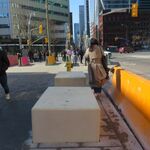While local preference in building materials varies from region to region, high-rise construction in the Greater Toronto Area, especially in the residential subcategory, is exclusively done with concrete. Despite concrete having been available since the days of Ancient Rome, 20th- and 21st-century technological advancements have made it the medium of choice for an expanding range of uses.
In a region like the GTA, with a variety of microclimates and underlying geological conditions, specialized types of concrete are being employed with increasing regularity. Customized formulations of concrete mixes now cater to foundations and caisson walls for sites with high water tables that need to be watertight, or road and water infrastructure that need particularly hardened varieties, and various other applications like industrial floors where standard concrete mixes aren't necessarily up to the task.
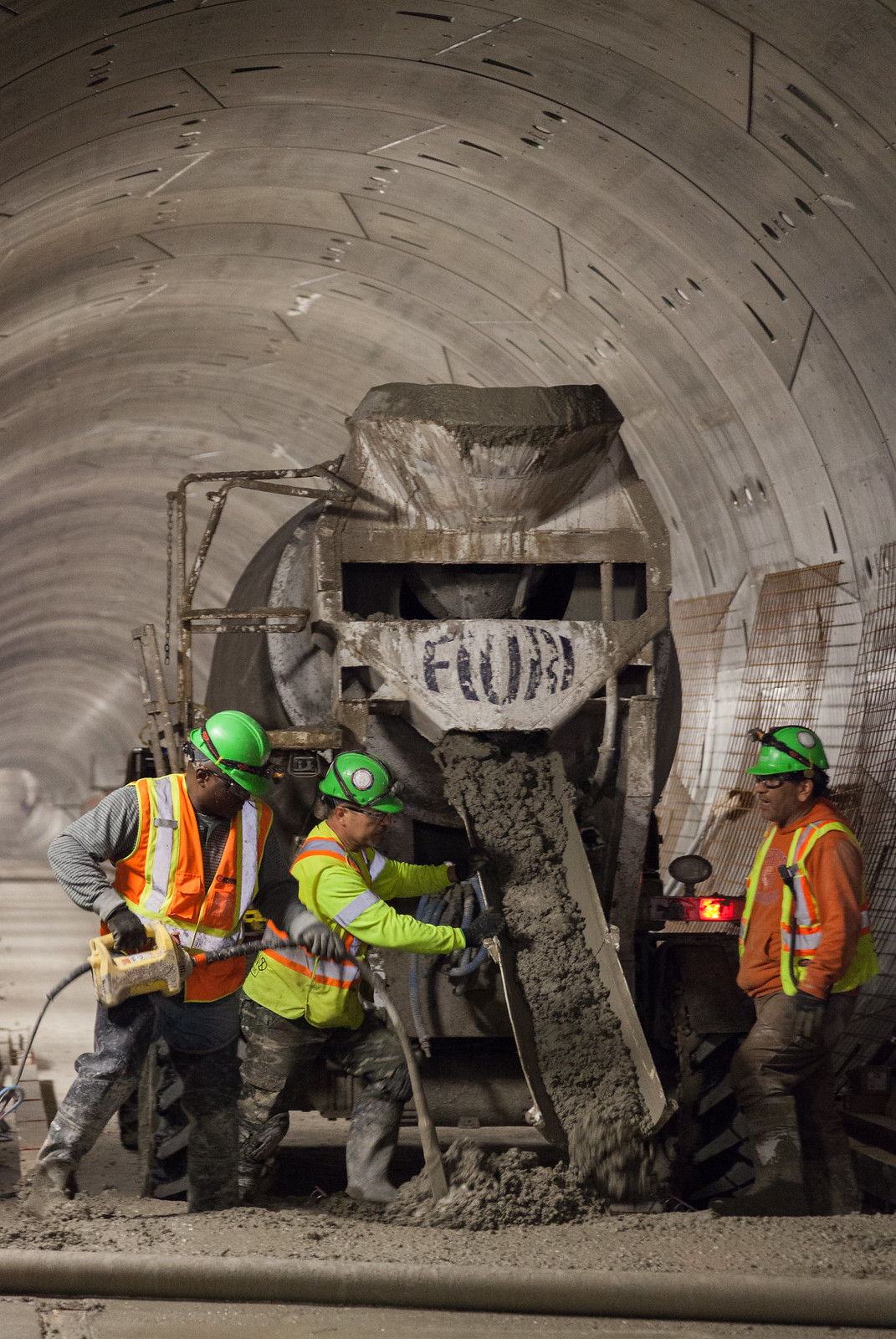 Concrete pouring for the Eglinton Crosstown LRT, image by Jack Landau
Concrete pouring for the Eglinton Crosstown LRT, image by Jack Landau
One admixture manufacturer helping the construction industry create new varieties of concrete mixes is Kryton International Inc. For over four decades, Kryton has produced admixtures using Smart Concrete technology, which has allowed concrete producers and builders to give their concrete the necessary waterproofing and durability qualities.
When Kryton first produced an admixture in the early 1980s, they developed a unique waterproofing admixture with a type of Smart Concrete technology known as Krystol® technology. With this feature, builders no longer needed to use waterproofing membranes. Instead, they could add Kryton’s admixture to their concrete mix, which would turn the concrete itself into a waterproof barrier. At any sign of water ingress then, the concrete would react, forming numerous needle-shaped crystals that fill up capillary pores and micro-cracks to prevent water from entering.
Applications like this are especially important where construction of deep foundations spans a range of geological conditions. Our region's glacial history and the resulting networks of ravines and waterways create challenging groundwater conditions for underground construction, while the need in dense areas and the desire in others to hide unsightly parking below ground are forcing builders to put their foundations deeper underground.
One such example is Terraces on the Park, a seven-storey building located in the Humber River valley in the Toronto suburb of Woodbridge. The site's riverside location's high water table and significant hydrostatic pressure means that waterproofing was critical for all underground concrete components. As a result, the foundation walls, slab-on-grade area, two levels of below grade parking, and the building’s exterior terraces were treated with Kryton's Krystol Internal Membrane™ (KIM®) waterproofing admixture, while joints and tieholes were waterproofed with Kryton’s Krystol® Waterstop System. With Downtown Toronto situated on a former glacial lakebed and a proliferation of tall towers being built on reclaimed land on the waterfront, these waterproofing solutions have plenty of other potential applications in foundation construction around the city.
KIM technology was also incorporated into the concrete at the 2014-built Gibson Square Condominiums in North York City Centre, a project that may be more familiar to UrbanToronto readers. With construction already well underway at the time, Kryton’s products were used as a solution to waterproof a south foundation wall. With a constrained site footprint and no room for a trench to accommodate a traditional external waterproofing membrane, Kryton's KIM admixture was added directly to the concrete mix for a faster, more cost-effective solution to the site-specific challenge. The benefits were immediately noted by the project team, who subsequently selected KIM for the waterproofing of the complex's elevator pits
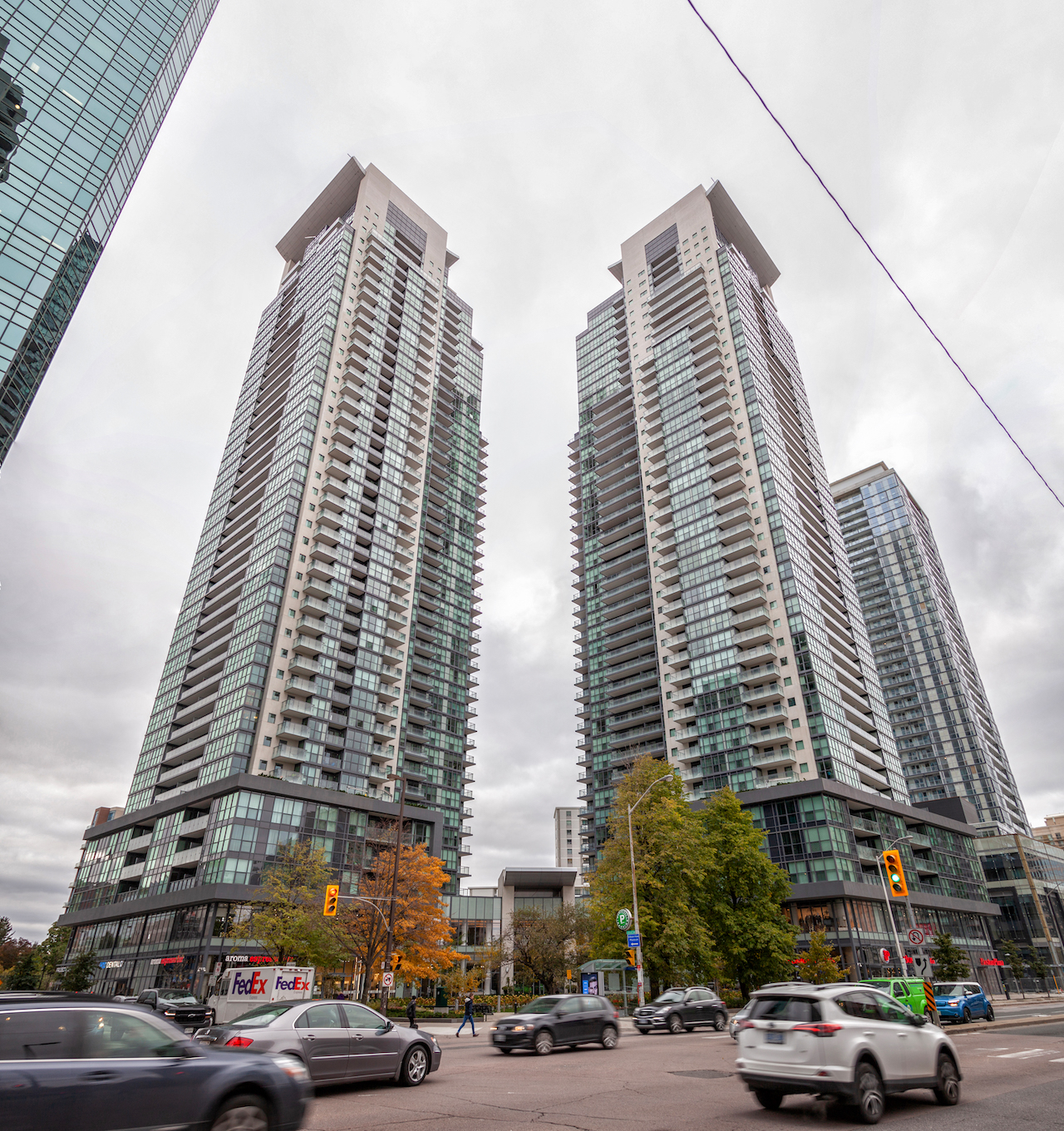 Looking northwest to Gibson Square, image by Jack Landau
Looking northwest to Gibson Square, image by Jack Landau
A popular water feature in Toronto's East Bayfront, Sherbourne Common, utilizes the same KIM waterproofing admixture for its lengthy concrete water channel, allowing the concrete to serve as an architectural finish without the need for additional water-sealing layers that could impact the aesthetic.
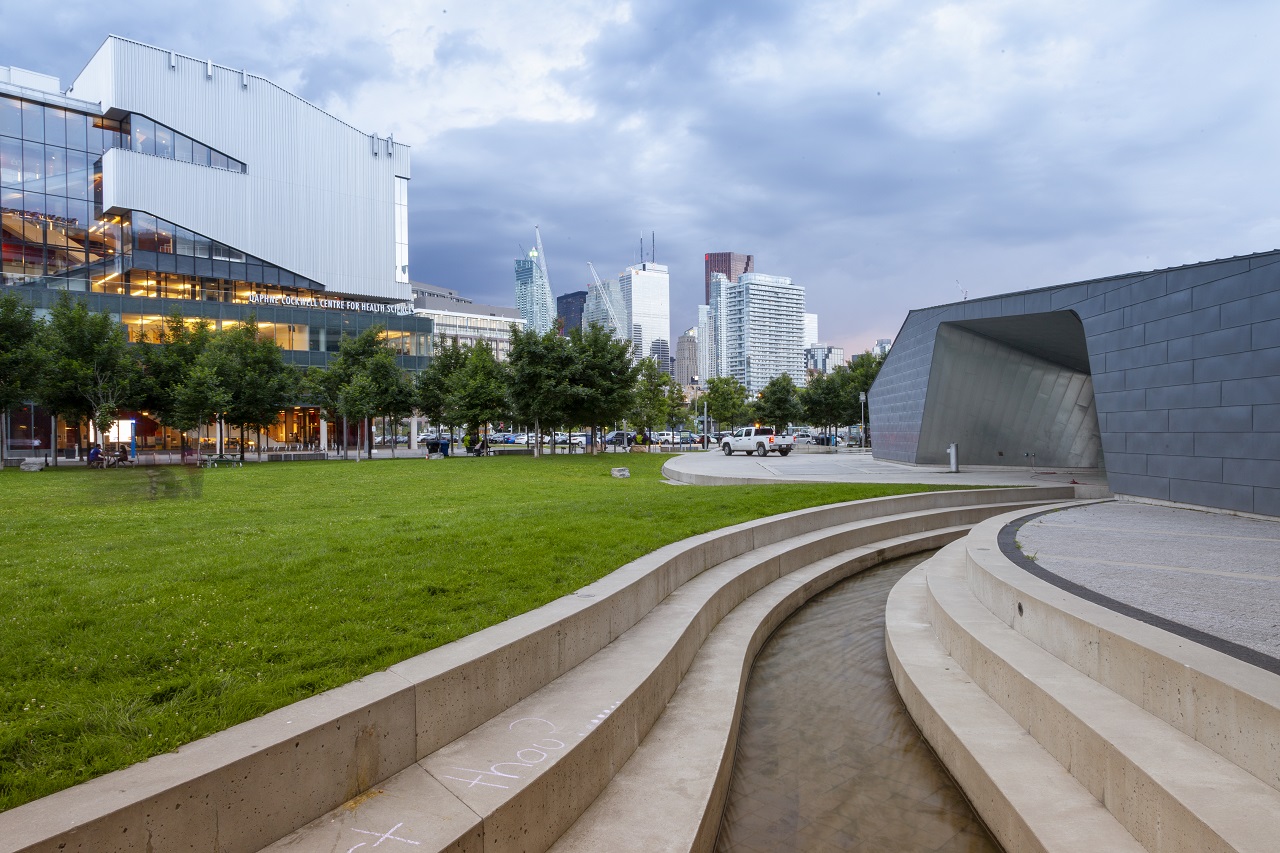 Sherbourne Common, image by Jack Landau
Sherbourne Common, image by Jack Landau
A more recent development in concrete admixtures produced by Kryton is being used in projects where increased abrasion resistance and durability are requirements. Projects like roads, hydro spillways, industrial flooring, agriculture, power generation, and marine structures are being built with the integral hardening admixture known as Hard-Cem®.
 Concrete pouring for the Crosstown LRT, image by Jack Landau
Concrete pouring for the Crosstown LRT, image by Jack Landau
One local application of Hard-Cem was at the TTC’s new McNicoll Bus Garage, now late in its construction in Scarborough. The project's construction team added Hard-Cem to the concrete used to form the building, increasing the hardness of the concrete paste and reducing wear loss and aggregate exposure due to abrasion. The result was a durable concrete structure capable of withstanding the constant surface abrasion and salt exposure associated with frequent bus movements.
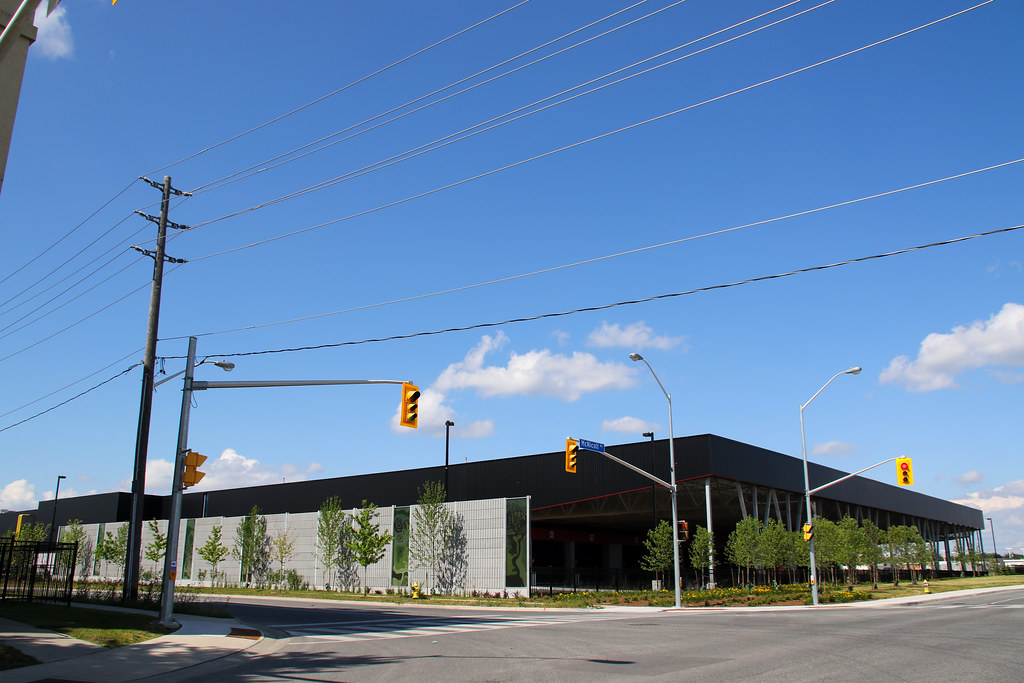 TTC McNicoll Bus Garage, image by Forum contributor drum118
TTC McNicoll Bus Garage, image by Forum contributor drum118
This resistance to surface abrasion and salt exposure also makes this durable concrete a good candidate for warehouses and facilities that deal with harsh wear and tear throughout Ontario and the rest of Canada. There are plenty of examples of this, but a particularly significant one can be seen at Markham’s Earl Turcott Waste Management Facility. Considered to be the largest of its kind in Canada, this facility processes around 2,600 metric tons of waste and accommodates at least 350 vehicles. Despite the ongoing surface abrasion and erosive forces that result from this activity, the facility has stayed in working shape for over a decade with the help of Hard-Cem-treated concrete .
 Gardiner Expressway, image by Marc Mitanis
Gardiner Expressway, image by Marc Mitanis
Keeping in the spirit of Smart Concrete, Kryton's latest big move came last year with the acquisition of a 30% interest in and North American distribution rights for a Denmark-based company producing advanced sensor technology known as Maturix®. This innovation attaches type K thermocouple cables to reinforcing steel, which will get immersed in concrete, and connects those cables to the sensors. That way, contractors only have to replace the cheap cables and can reuse these sensors for multiple projects. In return, the sensors monitor and log temperature data every 10 minutes and wirelessly transmit that data to Sigfox, a cloud-based platform. The platform then takes that data and time data to determine what strength the concrete currently has. Both temperature data and strength development data are then sent wirelessly to any connected device a contractor and their team chooses. All of which makes it easy to monitor concrete from anywhere at any time, giving the contractor, engineer, and any other team members the information they need to make critical decisions in a time-effective manner.
Overall, these updates to concrete construction will ensure that concrete remains the top material for thousands more years of civilization-shaping projects.
Additional information and images can be found in our Database file for related projects, linked below. Want to get involved in the discussion? Check out the associated Forum threads, or leave a comment in the space provided on this page.
* * *
UrbanToronto has a new way you can track projects through the planning process on a daily basis. Sign up for a free trial of our New Development Insider here.
| Related Companies: | CCxA, Menkes Developments, Patton Design Studio, The Fence People |

 11K
11K 























